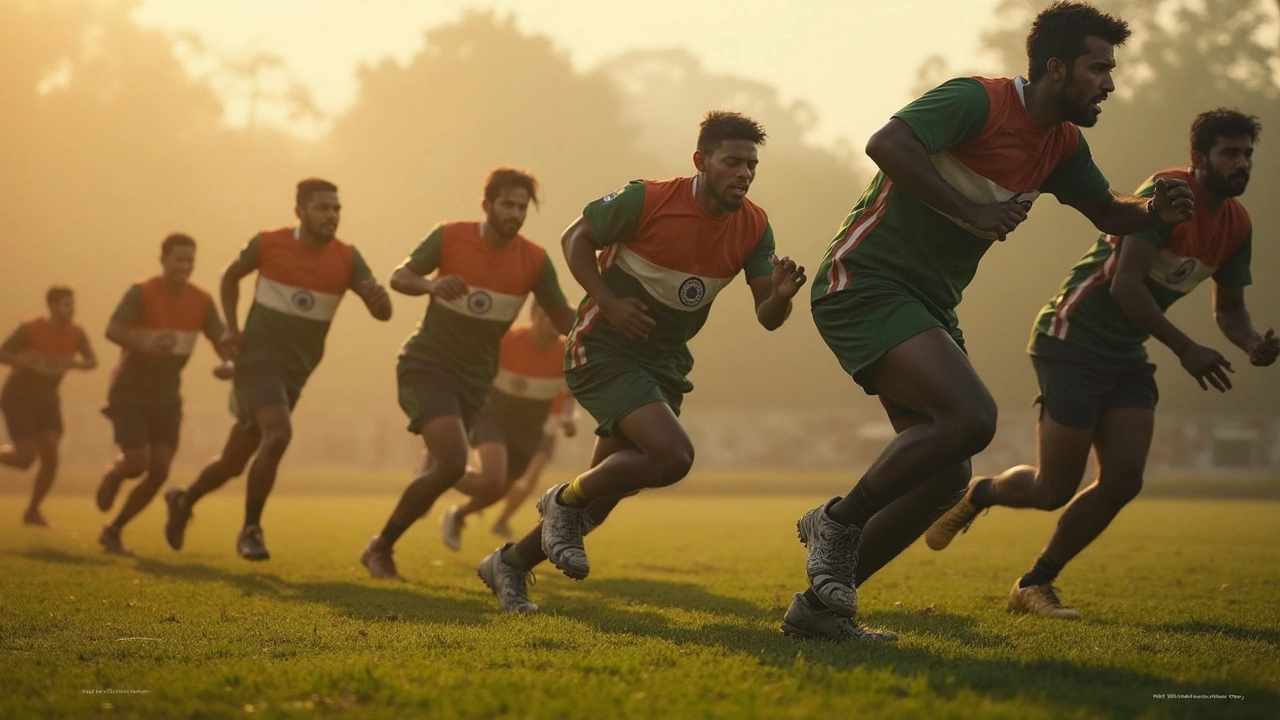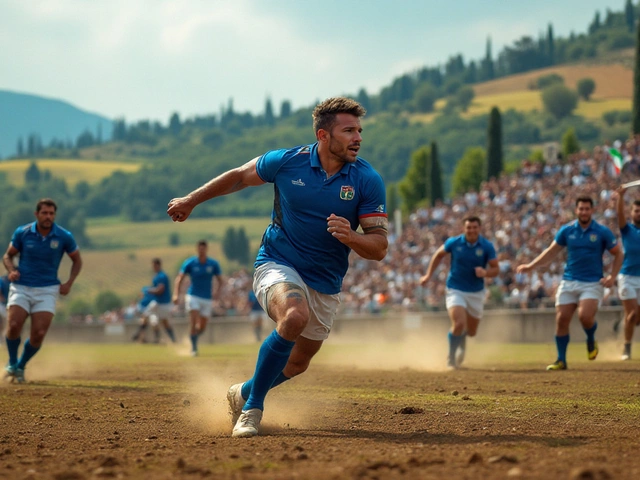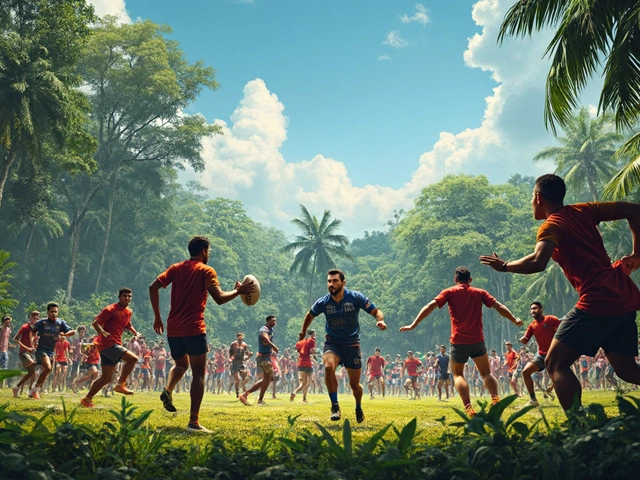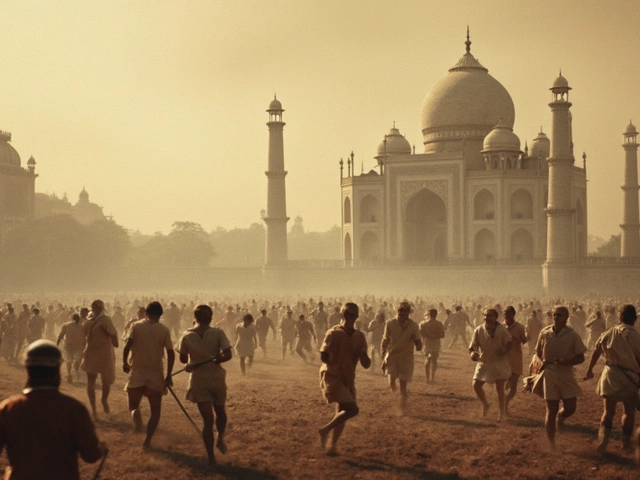If you’ve ever watched a pro rugby game, you’ll notice something straight away: those guys have legs like tree trunks. This isn’t by accident—big legs aren’t just for show. Rugby demands short, powerful sprints, heavy tackles, and constant pushing in scrums. Every match, players need explosive strength, especially in their lower bodies, or they’ll wind up flat on the grass. You can’t survive the game with skinny legs.
Rugby doesn’t forgive weakness. If your legs aren’t strong and thick, it’s easy to get taken down or pushed around. Ever tried carrying your kid—like my son Kabir—up the stairs after a tough gym session? Now imagine dragging an opponent your size across a muddy pitch while ten other guys slam into you. That’s why rugby players focus on building powerful legs—it’s about survival, not just looking tough.
- The Demands of Rugby Matches
- Strength and Conditioning Secrets
- Diet, Recovery, and Muscle Growth
- How to Build Rugby-Like Legs
The Demands of Rugby Matches
If you’ve ever stood on a rugby pitch, you know it’s a brutal, fast-paced game. Players aren’t jogging around and hoping for the best—they’re sprinting, tackling, kicking, and pushing full-force almost every minute. The average elite rugby player covers around 7 kilometers in a match, but it’s not a gentle run. About a quarter of that is in high-intensity bursts: full-on sprints and quick, sharp movements—think of dodging cars in traffic, but while carrying extra weight and getting hit by others.
Every tackle, scrum, and ruck puts massive stress on the legs. Front row players in the scrum—those tough dudes at the front—can each experience force up to 1,600 kg during engagement. That’s like having a car pressing down on you. No wonder their quads and hamstrings are huge.
Here’s what rugby legs really go up against:
- Repeated explosive sprints: Chasing breaks and shutting down attackers over and over.
- Scrummaging: Forwards push against the opposition—sometimes for 30 seconds or more per scrum—with the entire body driving through the legs.
- Tackling: Legs need to stop heavy runners dead in their tracks.
- Jackalling and rucking: Holding your ground and supporting your weight while you wrestle for the ball.
Nick Gill, Head Strength & Conditioning Coach for the All Blacks, put it straight:
“Rugby demands a huge amount of lower body strength, power, and resilience, not just for performance but to avoid injury. Without strong legs, you just can’t compete.”
For most players, it’s not just about being strong for a few seconds—it’s about having the stamina to keep going for a full 80-minute match. Powerful, well-trained legs mean you can take a pounding and still be the one running at the final whistle. That’s why you always see those giant legs on the pitch, game after game.
Strength and Conditioning Secrets
If you watch a rugby player's gym routine, you'll quickly see it’s all about leg power. Most teams train with squats, deadlifts, and lunges at least two times a week, and the weights on those bars are no joke. Big legs come from shifting heavy loads—and not just once or twice, but for high sets and reps that go way beyond the usual gym-goer’s comfort zone.
A common split for rugby strength training mixes heavy compound lifts with explosive moves. For example, you’ll see players crush a set of heavy squats, then go straight into box jumps or sled pushes. This isn’t just about getting bulky—it’s about building raw power that actually transfers to the pitch. Speed off the mark, breaking through tackles, and keeping balance in messy rucks all come down to lower body strength and fast-twitch muscle fibers.
Here’s a quick peek at what a rugby-focused lower body session might include:
- Back squats or front squats (4 sets of 6-8 reps, heavy)
- Deadlifts (3-4 sets, moderate to heavy)
- Walking lunges (with dumbbells, 3 sets of 10-12 reps per leg)
- Box jumps (3 sets, 8-10 reps with max height)
- Sled pushes or prowler sprints (5 rounds, 30 meters)
Unlike standard gym routines, rugby players blend in functional movements. This means actual pushing or pulling, like you would in a scrum, rather than just working on showy muscles in front of the mirror. Mobility also gets a look-in—tight hips or hamstrings can kill your performance, so stretching and dynamic warm-ups are part of every session.
Some pro squads use GPS trackers during training to measure sprint speed and power output. One English Premiership team found that their forwards average over 1,000 meters of "high intensity running" per game, with sprints every minute or so. No wonder they’re obsessed with leg strength.
If you want legs like a rugby player, consistency is king. Heavy lifts, explosive drills, and functional movements are the core ingredients. Skip leg day, and the sport will chew you up. Stick with it, and you’ll see your strength climb—and so will your confidence on and off the field.
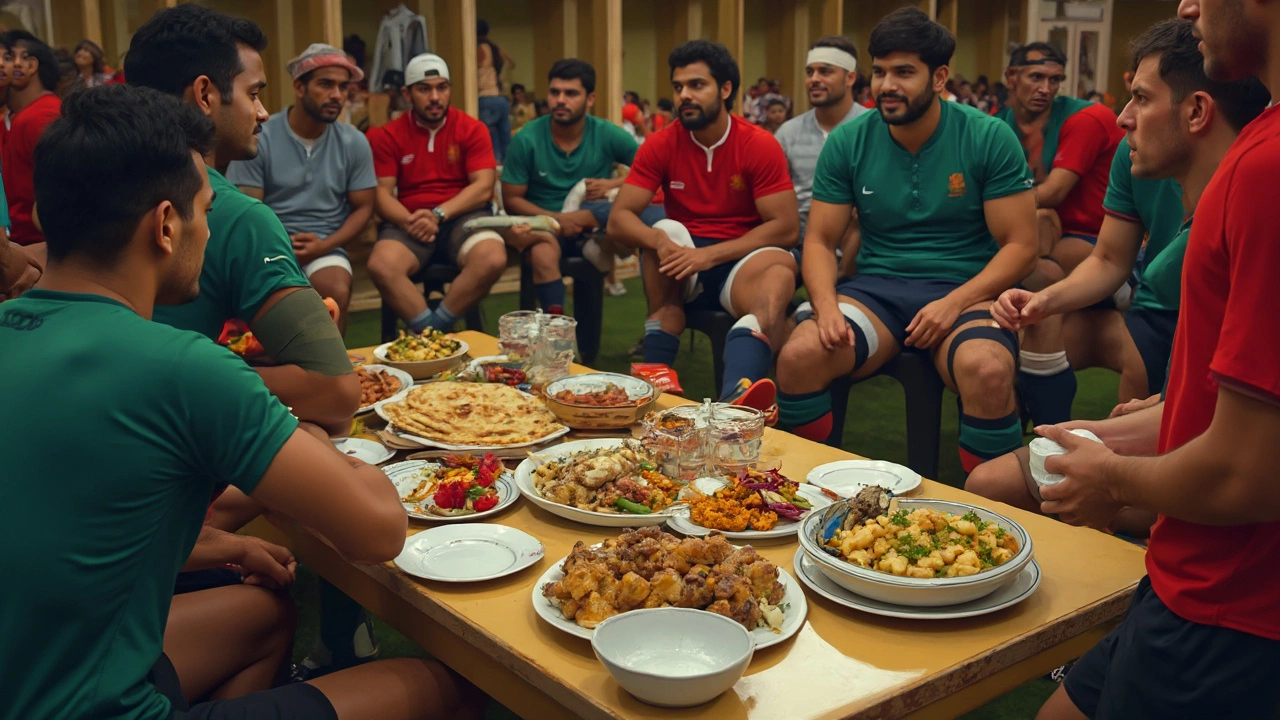
Diet, Recovery, and Muscle Growth
If you’re ever at a rugby club’s meal table, you’ll see it’s not all grilled chicken and salad. Rugby players need a lot of food—and not just for energy, but for real muscle growth. To keep those big legs, most stick to a high-protein, high-carb diet. Think steak, pasta, sweet potatoes, eggs, and gallons of milk. They aren’t eating like this for fun; that fuel builds muscle and keeps them going through back-to-back rugby fixtures.
Serious gains aren’t just about pounding weights—they’re about what you eat before, during, and after. Most pros aim for 1.6 to 2.2 grams of protein per kilogram of body weight daily. That’s a lot. Carbs matter too, helping with energy and recovery, especially during heavy match weeks. A player running up and down the pitch for eighty minutes burns through calories fast, so cutting corners with food isn’t an option.
| Nutrient | Recommended Amount | Why It Matters |
|---|---|---|
| Protein | 1.6-2.2g/kg | Muscle repair and growth |
| Carbs | 5-7g/kg | Energy for games & training |
| Fats | ~1g/kg | Hormone support & energy |
Now, recovery. Ever seen players in those weird-looking ice baths? That’s not just for social media. Cold therapy helps muscles heal quicker after intense games. Most rugby players also get massages, stretch heaps, and swear by sleep—at least 8 hours a night isn’t up for debate. Muscle only grows if it gets proper recovery time, so skipping rest is a rookie mistake.
Your body isn’t going to build thick, strong legs on junk food and four hours of sleep. If you want to get legs like a rugby player, don’t just copy their gym plan—focus on eating right and giving your legs real time to recover. That combo is what keeps rugby players thick-legged and match-ready, week after week.
How to Build Rugby-Like Legs
If you want legs like a rugby player, squats are your bread and butter. But there’s more to it than just smashing leg day at the gym. Building thick, powerful legs means you have to train like the pros do—focusing on power, speed, and muscle endurance. Let’s break down what actually works.
- Big lifts come first: Deadlifts, squats, and lunges are where rugby players carve out their size and strength. Don’t skip the heavy stuff. Try barbell back squats for overall growth, and mix in Bulgarian split squats to fire up each leg.
- Explosive moves matter: Rugby isn’t slow, so static training won’t cut it. Add box jumps, power cleans, and sled pushes to your workout. These build speed and that short-burst power you need for tackles and scrums.
- Mix in sprints and agility drills: It’s not just about size; rugby players need legs that move fast. Shuttle runs, hill sprints, and quick-feet ladder exercises help make strong legs athletic too.
- Focus on recovery: Legs this size take a beating. Pro players use foam rollers, stretching routines, and make sure to get sleep so their muscles rebuild stronger.
Nutrition plays a massive role, too. Eating enough protein and carbs keeps your legs growing and ready for the next session. If you’re training hard and skipping meals, you’ll be spinning your wheels. A study from 2022 looked at elite rugby players and found their average daily protein intake was around 2 grams per kilogram of body weight—pretty much double what most folks eat.
| Exercise | Sets | Reps |
|---|---|---|
| Barbell Back Squat | 4 | 6-8 |
| Deadlift | 3 | 5 |
| Box Jumps | 4 | 8 |
| Bulgarian Split Squat | 3 | 10 (each leg) |
| Sled Push/Drag | 3 | 15m |
You don’t need fancy equipment. I’ve seen kids turn picnic benches into training gear and get surprisingly strong. Stick with the basics, commit to regular training, and feed those muscles right. If you want to look like you can survive a rugby match, put in the consistent work—there aren’t any shortcuts.
